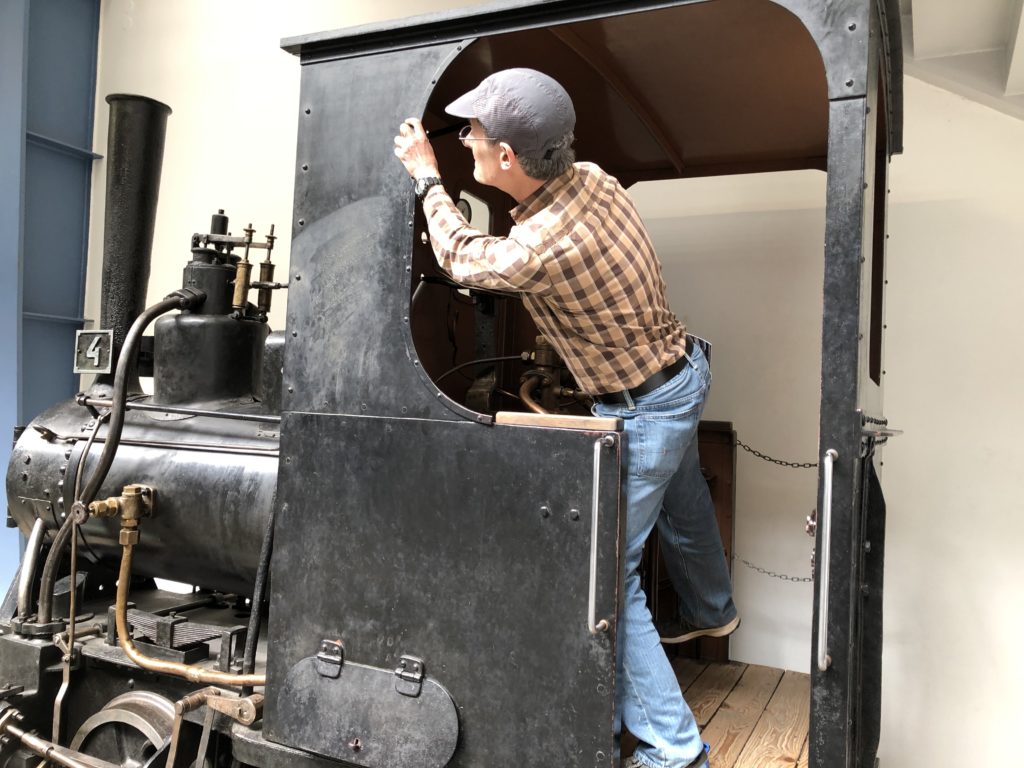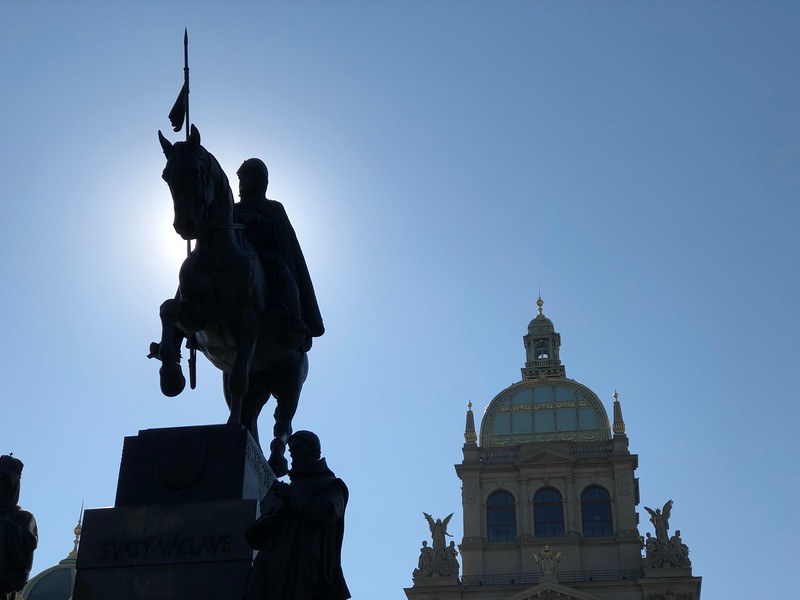Our first stop in our Central European adventure was the city of Prague. I’d been once before, for a weekend after taking some classes in Germany nine years earlier. I was greatly looking forward to seeing the city anew, and with another set of eyes alongside.
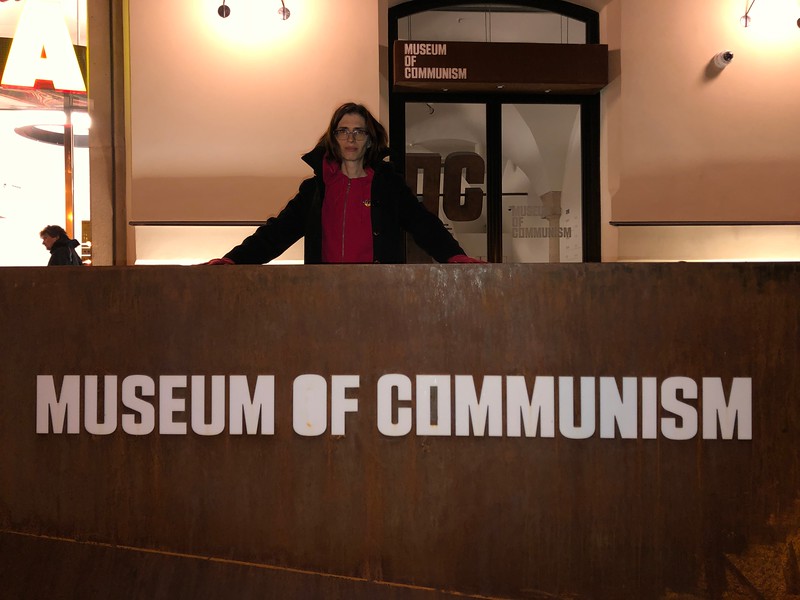
A friend of David’s from the Piermont Rowing Club came to the US from Czechoslovakia during the Communist era. Since the Velvet Revolution, she’s been able to return, and she and her husband split time between New York and Prague during the year.
We pulled into Praha h.l.n. and quickly disembarked, setting out from the station on a twenty minute walk to our hotel. One surprise, as we walked through the park near the station, was a statue of Woodrow Wilson, apparently beloved by the Czechs as he advocated for self-determination following World War I and the collapse of the Austro-Hungarian empire. The original statue was destroyed by the Nazis in World War II; the current statue has been in place since 2011. I’ll have to remember this when I get around to writing about Woodrow Wilson.
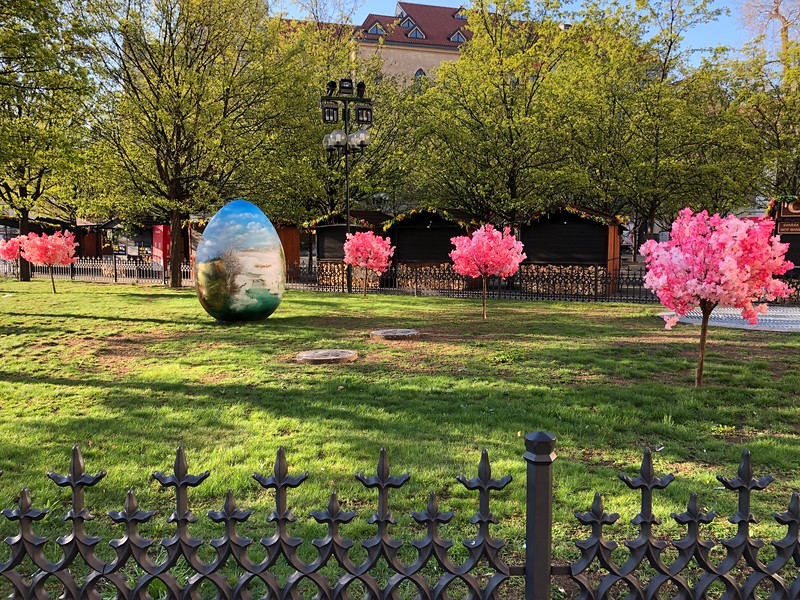
We stayed at the Hotel Antik in Old Town; the rates were very reasonable, the accommodations adequate, and the location central to everything we needed, including the rail station. We did have to traipse through the dining room to get to our wing of the hotel, awkward only when carrying three backpacks and a ski bag. Breakfast was good, and the hotel service very helpful.
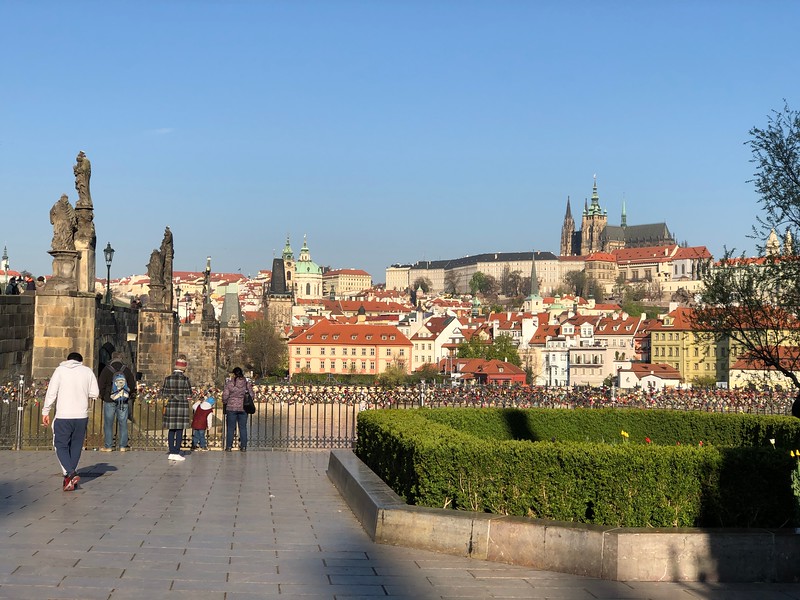
Day 1
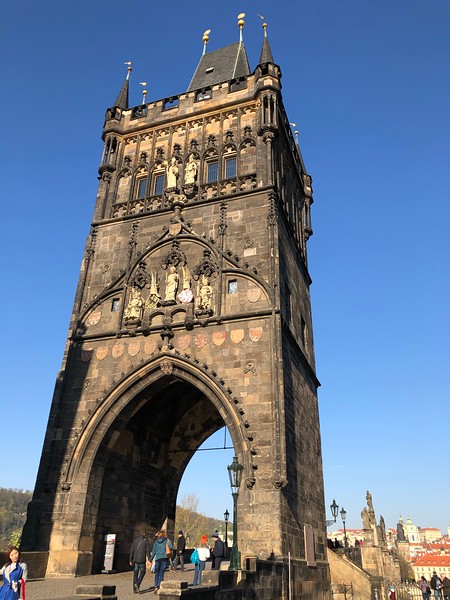
On our first full day, we set out for the obvious sites: walked to the river, crossed the Charles Bridge, then wound our way through the Mala Strana neighborhood, up to the castle complex. The castle dominates the city skyline. As one would expect, it overlooks the city it is meant to protect, and over several centuries, has expanded layer upon layer upon layer, until it was finally a small town in its own right. Most of what we would see this day was within the palace grounds.
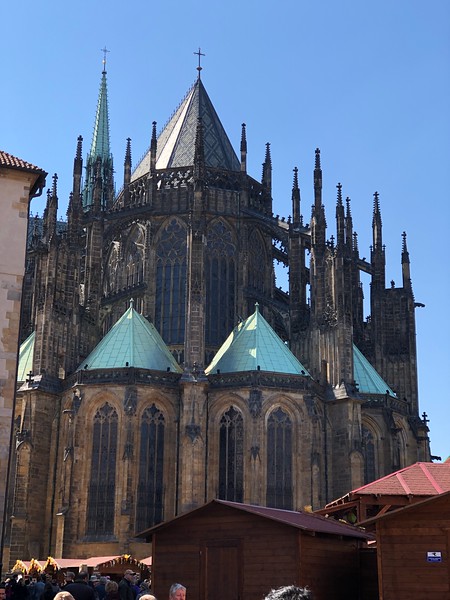
We began with a walk through the Cathedral of St. Vitus. Originally much smaller, from within the cathedral it’s not hard to make out where the old cathedral ended and the expansion began, as the architecture is different. St. Vitus holds a chamber for St. Wenceslas, he of “Good King Wenceslas” Christmas tune fame, and at over a thousand years of age, the cathedral reeks of history.
Within the old palace is a records room. Basically all the land deeds were held there, so that the state would know whom and how much to tax. Unfortunately, one year there was a fire, and the only records that survived were those that a clerk had taken home. I work in information technology, and could not help processing that story through the lenses of disaster recovery, access controls, and a whole bunch of other industry terms. I also imagined how landowners might feel if either A) their records were gone or B) their records were in place because of that one guy.
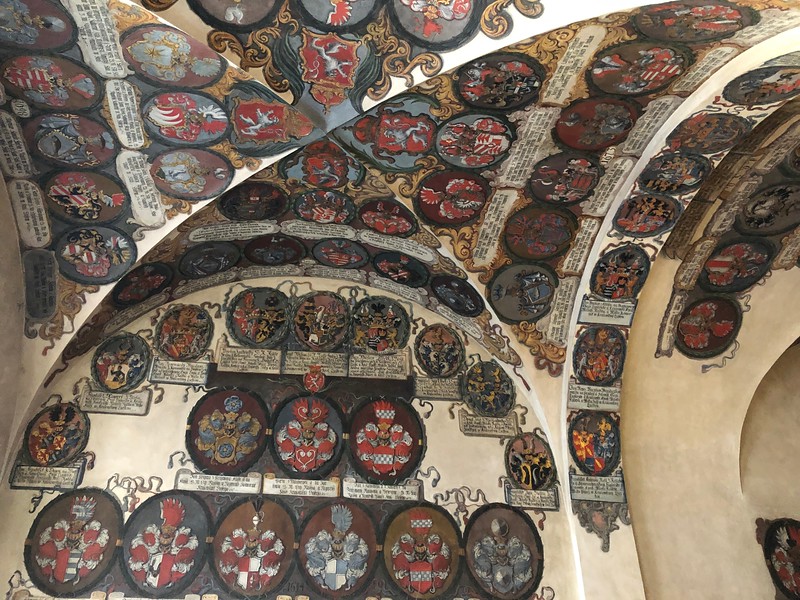
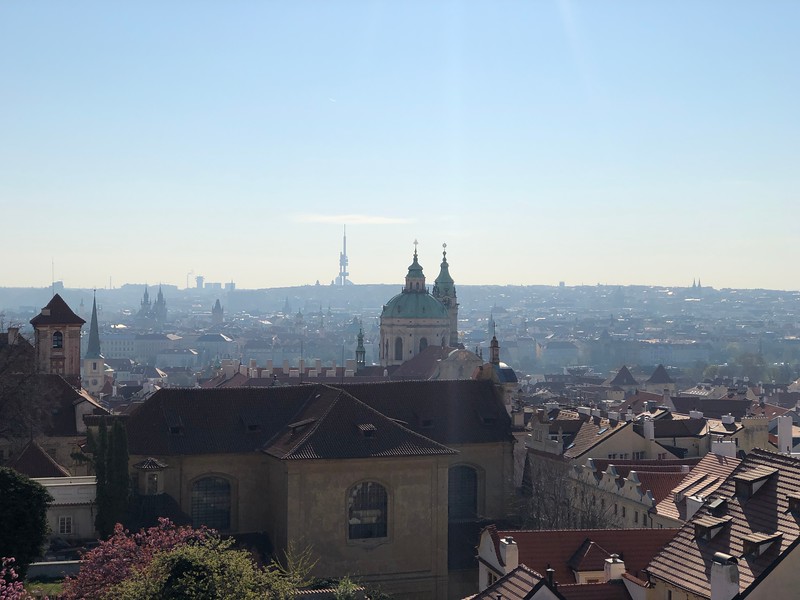
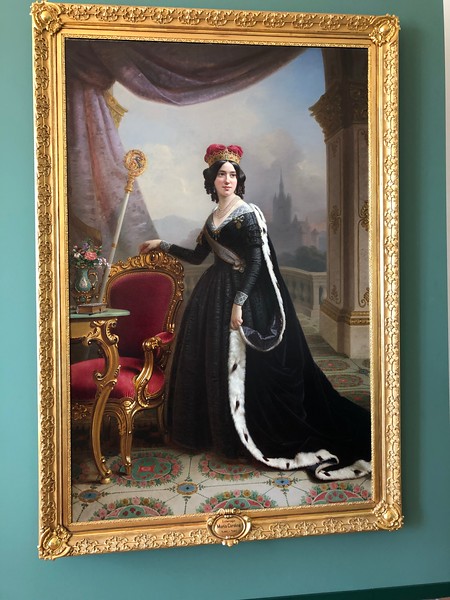
We’d bought a combination ticket to see several sites within the palaces (old and newer), including the former abode of the Theresian Institution of Noble Ladies, basically a convent/sorority for privileged young women run by Maria Theresia Walburga Amalia Christina – the Maria Theresa over whom the War of Austrian Succession would be fought.
We also walked along the Golden Way, an outer wall against which small apartments had been built for the artillerymen who would defend the castle walls; over time, these apartments became a sort of property right that could be passed along, and later bought and sold. Kafka used to visit his sister in Apartment 22 to get some writing done, away from the bustle of the city proper.
Within the walls was a torture museum and an armory museum. They also had a lil’ crossbow shootin’ gallery. I made three bullseyes.
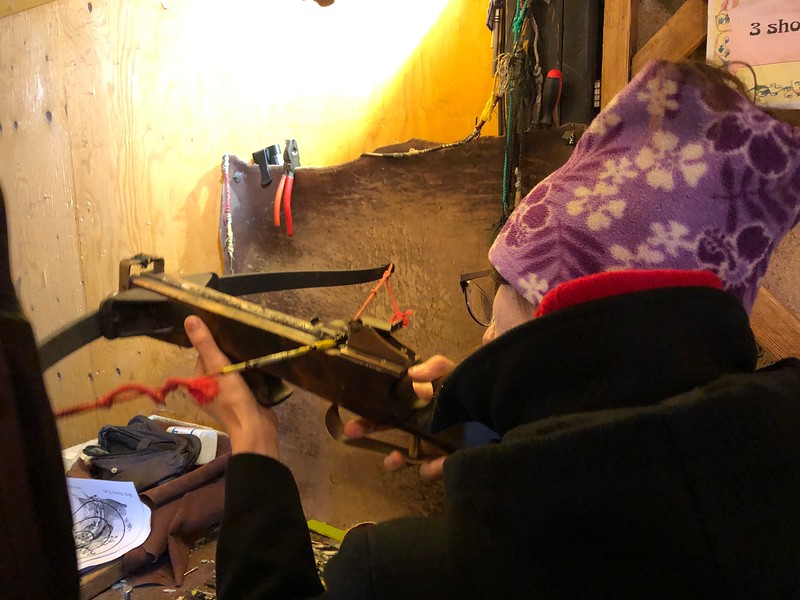
After the palace, we walked through the Mala Strana, or Lesser/Lower Town, and after a quick bite meandered through Petrin Park. There is a observation tower designed like a scaled-down Eiffel Tower, which afforded excellent views. Then, we took the funicular down to the bottom of the hill, to cross the river back to our hotel.
It’s here we had the only bad experience. As we arrived at the funicular station, we hurriedly bought paper tickets from a machine, fumbling with coins, hoping to catch the train before it left the station. We walked past the turnstiles and stood as the train descended. We missed a critical step: validation.
This is pretty common on a lot of urban transport systems, including New York: The ticket can be used at any time, but must be validated to start the clock. stamping at a machine. We were in a rush as the train pulled in, frantically dropping coins, and just walked on with our tickets unstamped. Typically enforcement is uniformed officers spot-checking, and sure enough, at the end of the line we were asked to produce our tickets.
It was a shock, first because we didn’t realize what we’d done wrong, and second because we’d thought the funicular was essentially its own thing, not part of the public transportation system. After much sturm-und-drang, we were escorted by a copy to an ATM to withdraw some cash to pay the fine. It felt like a shakedown, even if it wasn’t, and they don’t make it hard to make this kind of mistake. In the end we were out about $40 each, which was on the lighter side of the fine.
We were in a hurry, after all, to get to the hotel and freshen up before meeting David’s friends for dinner. We met aboard a docked river cruise boat, transformed into a restaurant, with a view looking up at the castle, which was beautifully lit. After an excellent dinner and company, we went to a jazz kellar, just David and myself, and had a nightcap listening to a bluesy rock trio, singing in English, and after that we walked back to the hotel, along cobblestone streets.
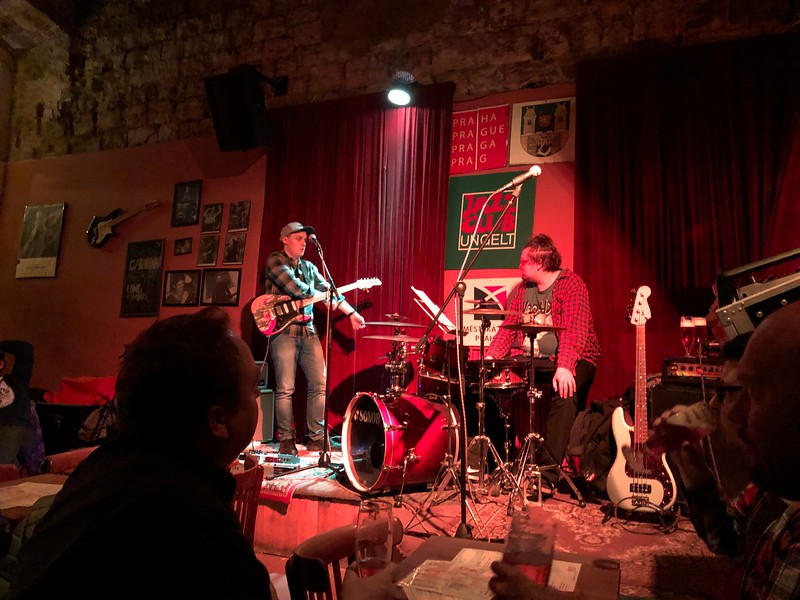
Day 2
Our second day in Prague was also our last. We made arrangements to leave our luggage at the hotel while we made our sortie to the National Technical Museum, to the north a bit, over the river.
David and I are both aficionados of aviation, and the Technical Museum promised that and much more. Our guidebook featured a photo of a large hall filled with planes and cars and other vehicles, but several smaller wings showcased Czech prowess in other technical endeavors. We walked north, across a bridge, then up a ridgeline to a park. After mistakenly going to the children’s Technical Museum first, we got to the right place.
Before we got to the main hall, we found a small gallery of racing bicycles. I had no idea bicycle racing was such a huge sport, but it was. The history of velocipedes and velodromes was laid out before us. There’s a direct line from the development of fast bicycles to fast motorcycles.
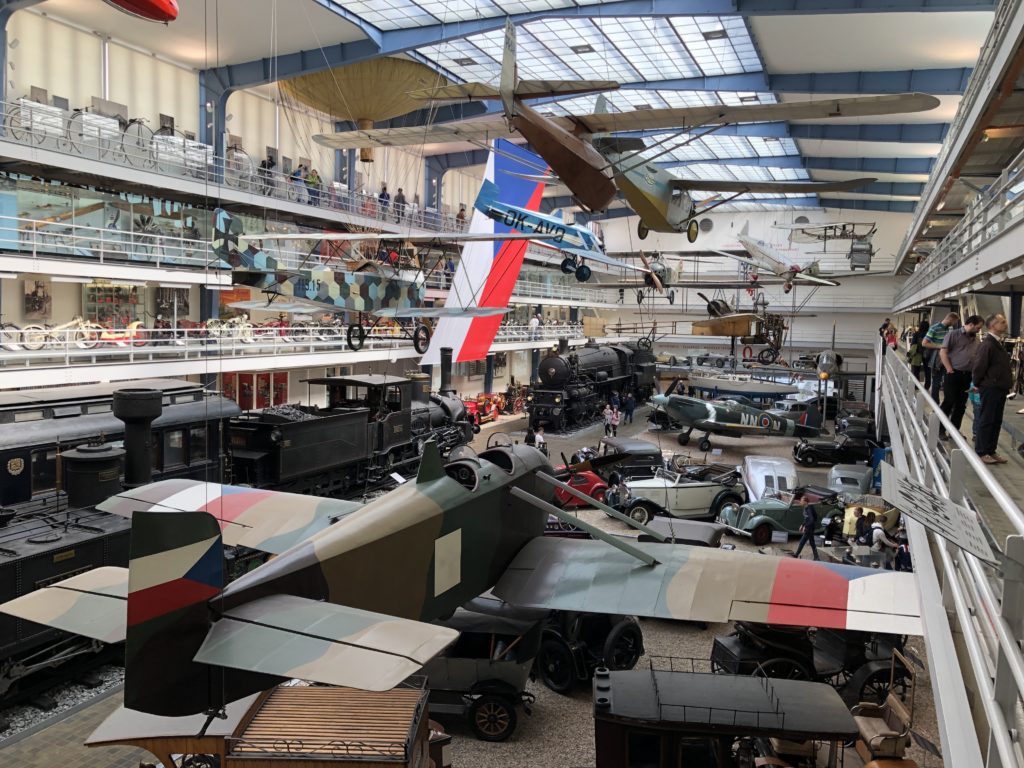
The main hall was filled with numerous vehicles; in hindsight, a couple stand out. First was a car used by a Nazi overlord who, after his boss was assassinated in his car by Czech resistance fighter, had his own car armored; the placard noted that after the war, the car was eventually used in the Communist era by another authoritarian regime.
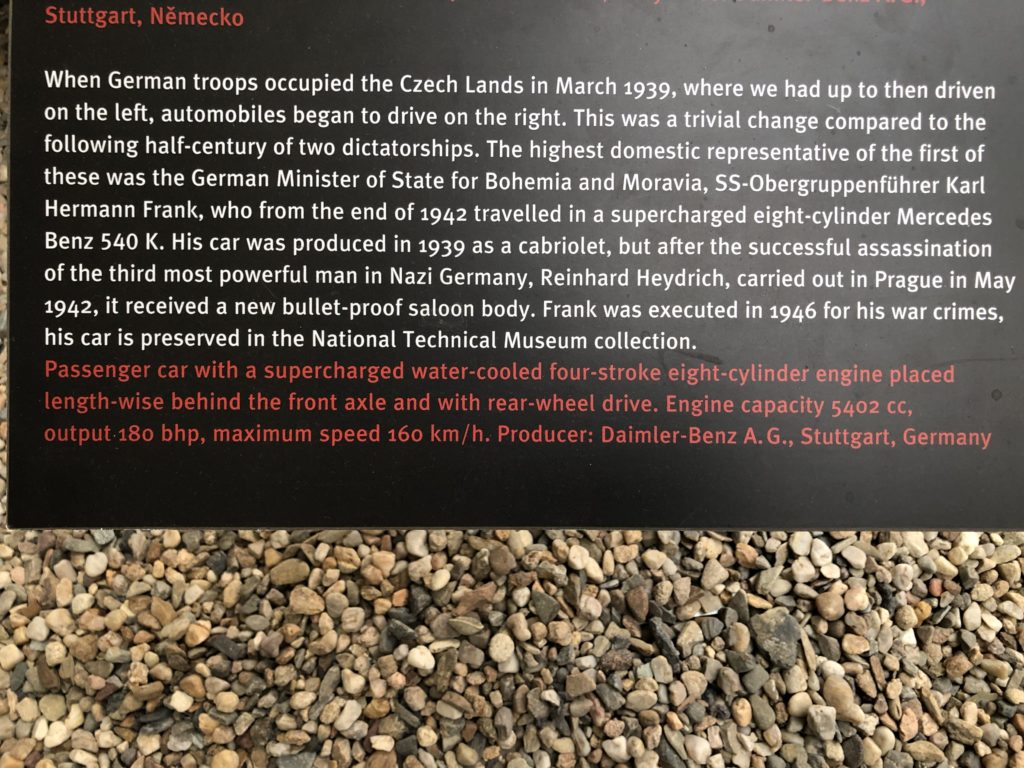
The other notable car was a mid-range Honda Civic donated the President of Portugal to Vaclav Havel, shortly before he was elected the first post-Communist President of Czechoslovakia. Havel kept the car as a symbol of his being of the people, and not darting about in a fancy limousine.
My favorite part of the museum, however, was the wing on home appliances. First, because I believe that domestic technologies are under-appreciated except by the people who use them. Second, because several had examples of advertising from the period, or at least informative placards, that inform how us how those in the past saw these machines. A truism of technology is that labor-saving devices don’t let us labor less; we just labor more in the same period of time.
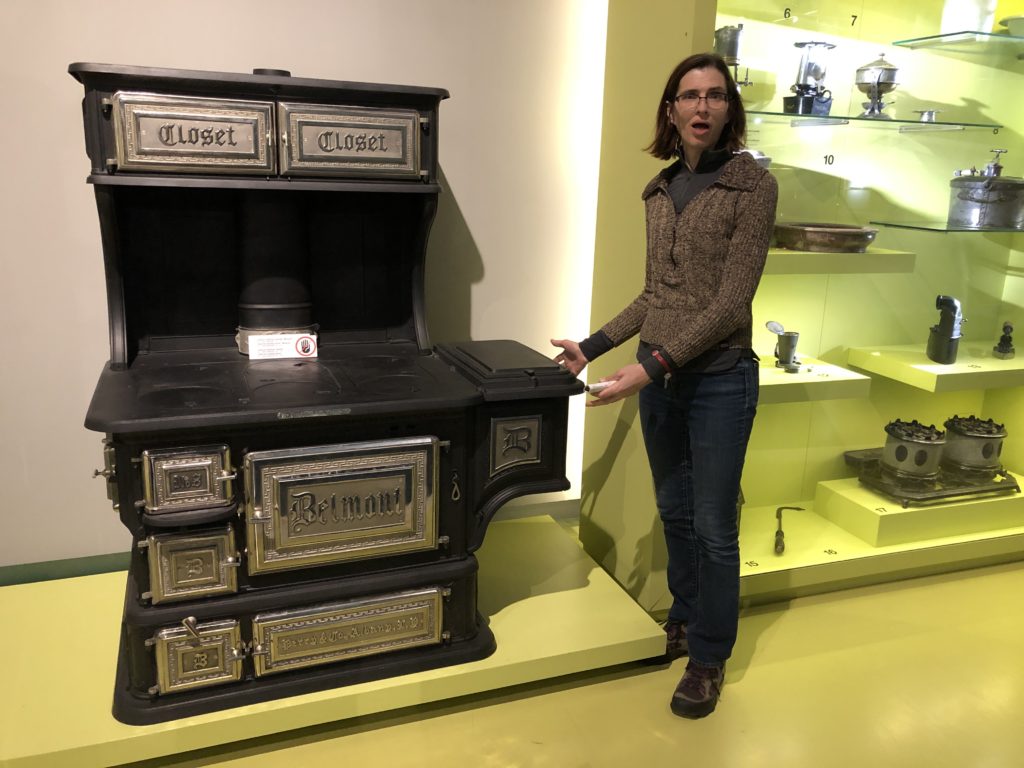
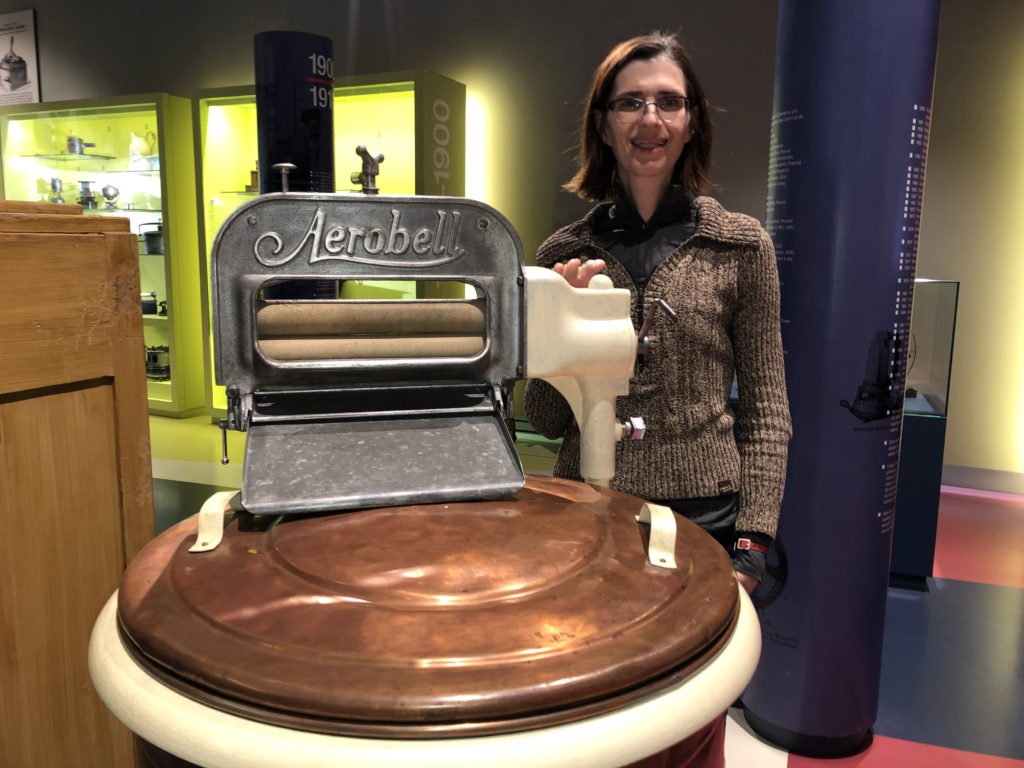
After the museum, we headed back to the hotel to collect our luggage, and then went to the railway station to catch our next train. Farewell, Prague, “Paris of the East”. We were off to Vienna next.
